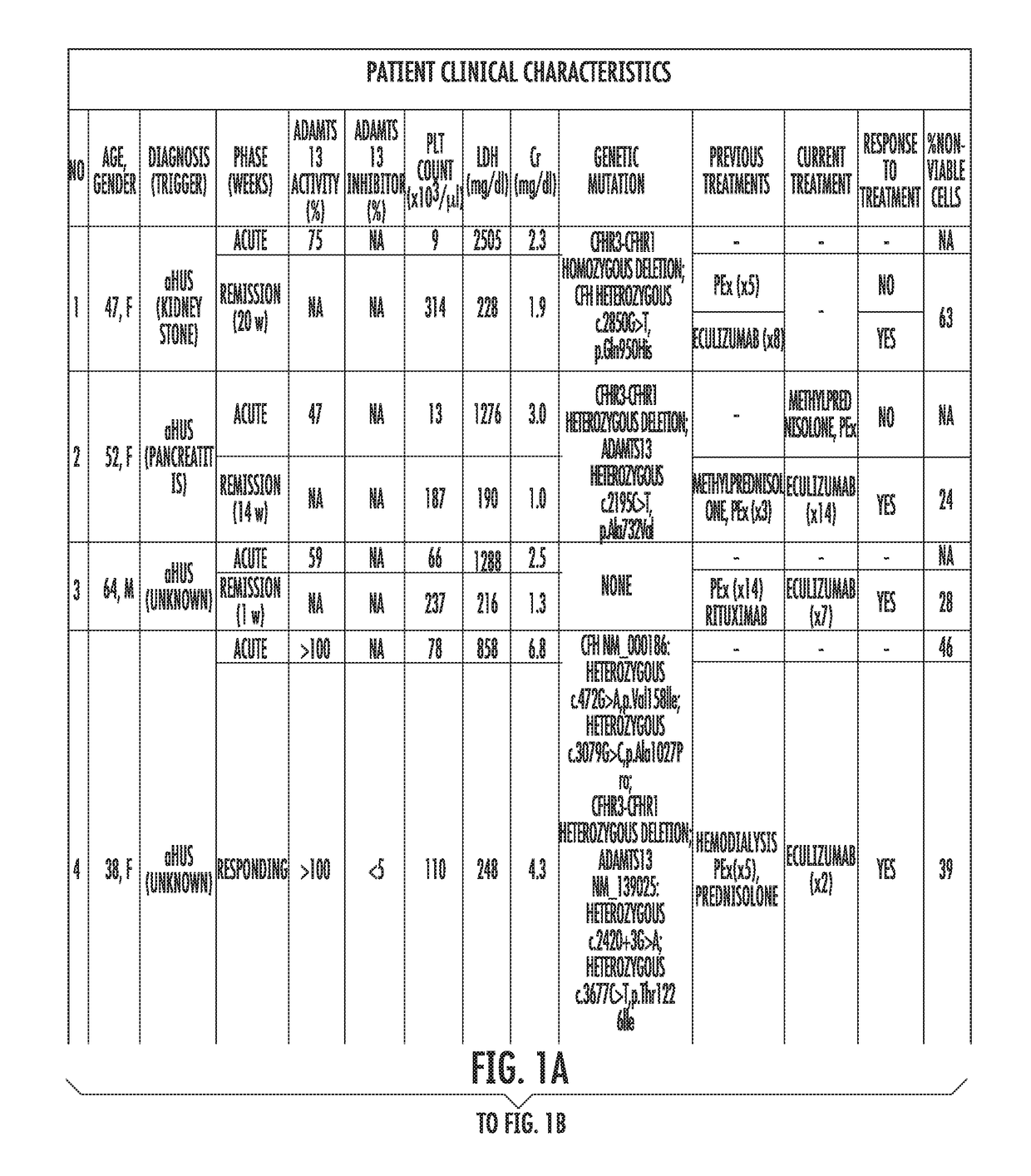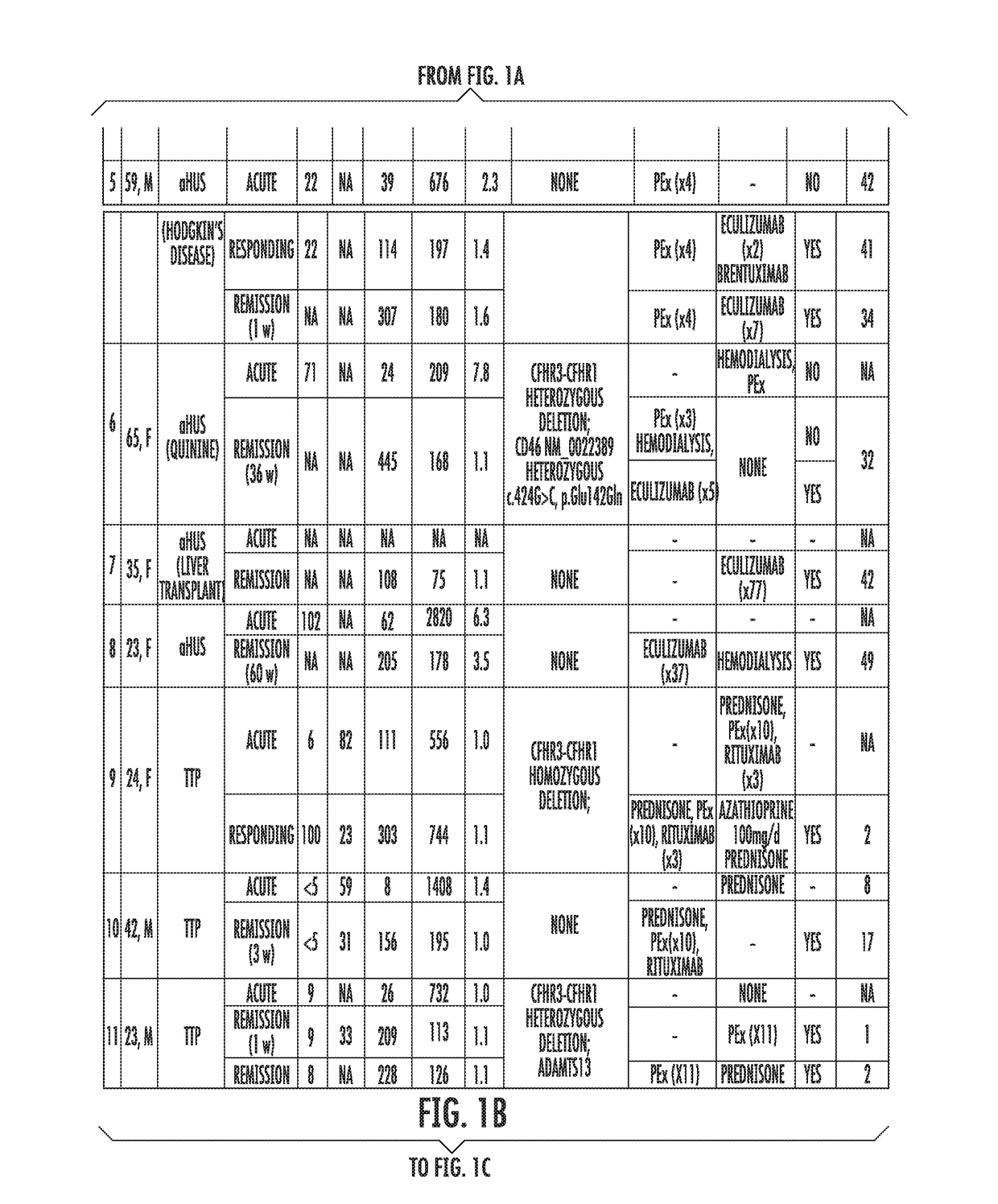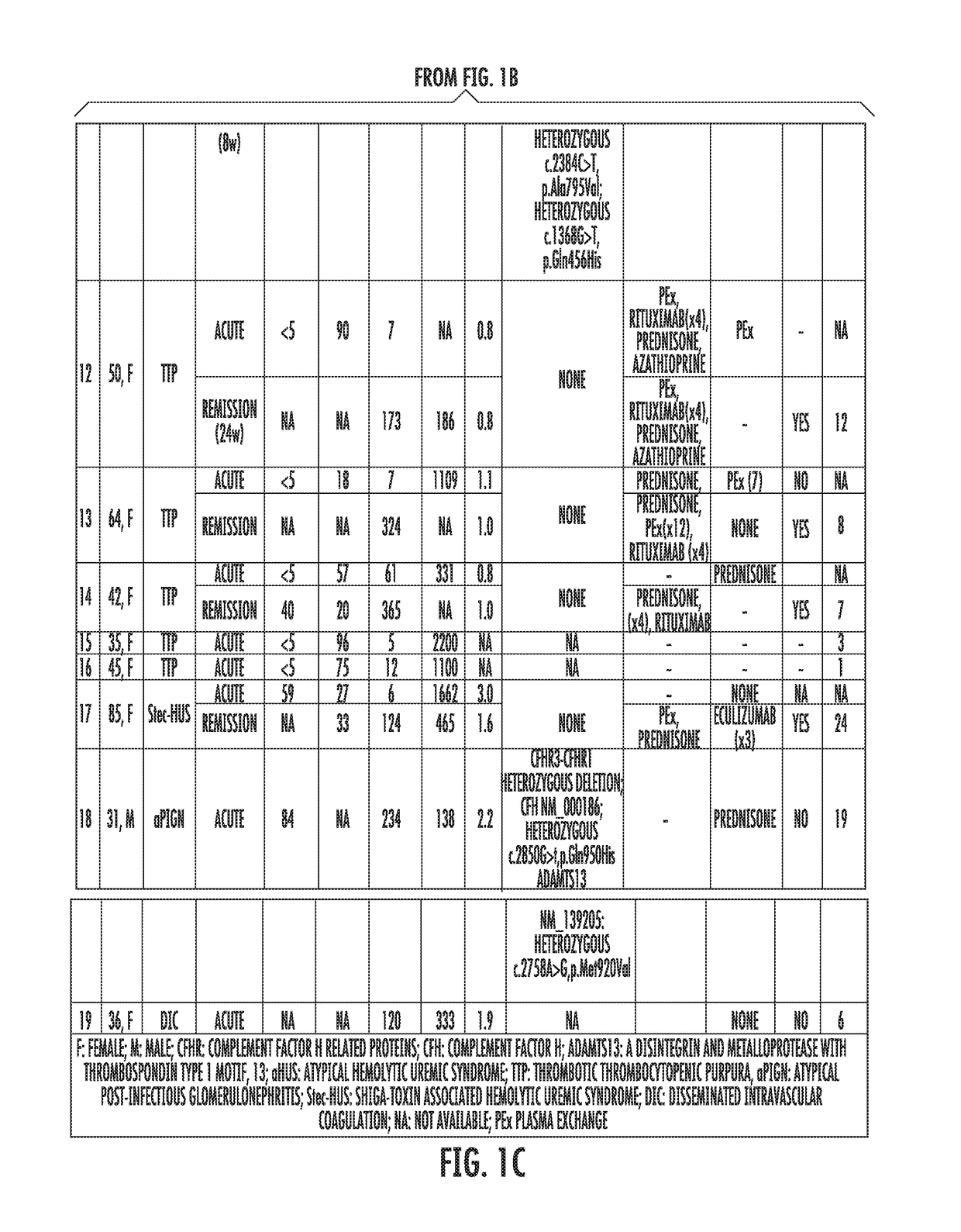Assay to diagnose and treat disorders of the alternative pathway of complement activation
- Summary
- Abstract
- Description
- Claims
- Application Information
AI Technical Summary
Benefits of technology
Problems solved by technology
Method used
Image
Examples
example 1
Atypical Hemolytic Uremic Syndrome
Materials and Methods
[0058]Study's Population.
[0059]Patients assessed in the Johns Hopkins University Department of Medicine-Division of Hematology from August 2014 until February 2015 with the differential diagnosis of TMA were enrolled. Patients were clinically categorized as aHUS if their first manifestation of the syndrome met the following criteria: (1) platelet count 9 / L, (2) serum creatinine >2.25 mg / dL, and (3) ADAMTS13 activity >10%. These criteria have been proposed in previous studies to clinically differentiate patients with aHUS (Cataland et al., 157(4) BR. J. HAEMATOL. 501-03 (2012); and Coppo et al., 5(4) PLOS ONE e10208 (2010)). Final diagnosis, course and patient treatment were recorded. All patients gave written informed consent and were enrolled in our TMA Registry. This study was approved by the Institutional Review Board and was conducted in accordance with the Declaration of Helsinki.
[0060]Healthy subjects were recruited from t...
example 2
Antiphospholipid Antibody Syndrome (APS)
[0097]APS and CAPS (catastrophic APS) are poorly defined autoimmune diseases that lead to venous and arterial thrombosis, obstetric complications, and death. Currently, the diagnosis of APS is cumbersome and subject to debate as to the most appropriate diagnostic assays. Furthermore the natural history of APS and the best approach to therapy is also unclear, in part, due to variability and reliability of the various assays; thus, more reliable and specific markers for APS are needed. Here we describe a novel serum-based assay that helps to diagnose increased activity in the alternative pathway of complement, a hallmark of APS.
[0098]Antiphospholipid syndrome (APS) is an autoimmune disorder characterized by thrombosis and / or specific adverse obstetric outcomes in conjunction with antiphospholipid antibodies. Current laboratory diagnosis of APS requires the presence of a lupus anticoagulant (LA), moderate-to-high level IgG and or IgM antibodies t...
example 3
Ham Test Protocol
[0107]Sample Collection.
[0108]Serum should be collected as soon as possible after the blood is drawn and stored at −80° C. within 4 hours.
[0109]Equipment needed.[0110]TF-1 PIGA null cells cultured in RPMI 1640 medium supplemented with 2 ng / mL of granulocyte-macrophage colony-stimulating factor (GM-CSF), 2 mM 1-glutamine, penicillin / streptomycin, and 10% fetal calf serum.[0111]U-shaped 96-well plate[0112]Gelatin veronal buffer (GVB, Sigma-Aldrich)[0113]Negative control: normal human AB serum[0114]Positive control: a) cobra venom factor (CVF, Complement technology), or b) serum from aHUS patient[0115]WST-1 Assay (Roche)[0116]Absorbance reader
[0117]Preparation.
[0118]Calculate the number of wells needed. Each sample and its heat-inactivated control are analyzed in triplicates. Each assay has a negative control (normal serum and heat-inactivated normal serum) and a positive control.
[0119]Collect desired number of TF-1 PIGA null cells (according to the number of wells −4,...
PUM
| Property | Measurement | Unit |
|---|---|---|
| Density | aaaaa | aaaaa |
| Cell viability | aaaaa | aaaaa |
Abstract
Description
Claims
Application Information
 Login to View More
Login to View More - R&D
- Intellectual Property
- Life Sciences
- Materials
- Tech Scout
- Unparalleled Data Quality
- Higher Quality Content
- 60% Fewer Hallucinations
Browse by: Latest US Patents, China's latest patents, Technical Efficacy Thesaurus, Application Domain, Technology Topic, Popular Technical Reports.
© 2025 PatSnap. All rights reserved.Legal|Privacy policy|Modern Slavery Act Transparency Statement|Sitemap|About US| Contact US: help@patsnap.com



